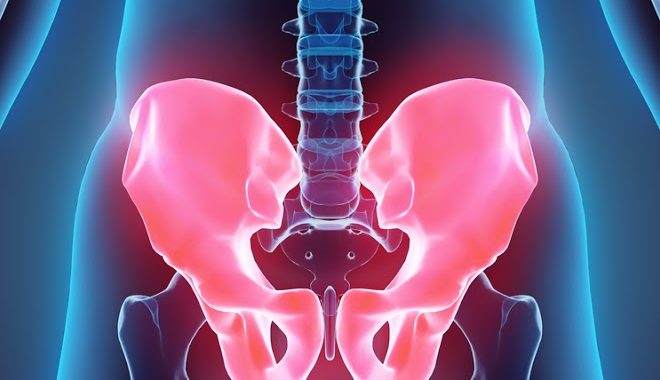Prostatitis is a painful condition leading men to seek treatment for pelvic pain affecting daily activities, exercise and sexual function. There are different classes of prostatitis, and while some respond to medical treatment, including antibiotics, non-bacterial chronic prostatitis does not. Our patients often report taking multiple rounds of antibiotics despite negative cultures for infection and without improvement in symptoms. When antibiotics fail to work, men are told that there is nothing additional that can be done and they are left to suffer silently. The most common form of prostatitis, is known as non-bacterial, non-inflammatory prostatitis. In some cases, men with this diagnosis have muscular and/ or nerve- related issues that are contributing to symptoms and are completely TREATABLE!
What it feels like: Deep/ aching pain in the rectum or pelvis, soreness in perineum, behind the pubic bone, and sometimes extending to the abdomen and scrotum
What makes it better: Temporary relief may occur with use of heat or ice. Prostate massage performed by your doctor or partner may also temporarily decrease pain.
What makes it worse: Some men experience aggravated symptoms due to prolonged sitting, exercise, or sexual activity, while others report constant or intermittent pain without specific triggers.
What causes it: There are many factors that contribute to pelvic pain in men. Musculoskeletal contributors include muscular tension or impaired muscular coordination and nerve irritation. While posture and alignment are not necessarily correlated with pain or injury, repetitive load on muscles, joints and soft tissue can contribute to pelvic pain symptoms. Anxiety, bowel and bladder disorders must also be considered as part of the pelvic pain cycle.
How to treat it:
Exercise! Moving your body and being active is an effective form of self care. Those who participate in higher leisure activities (walking at least 10 hours/ week) have been found to have a decreased risk of chronic pelvic pain compared to those who did not exercise (Fitzgerald et al). If you are already exercising and it seems to make your symptoms worse, fear not- pelvic physical therapists can work with you to modify your program to make exercise help you instead of hurt you. If you want to be more active but don’t know where to start, we can create an individualized program tailored to your needs.
Manual therapy: There’s increasing debate about trigger points- whether they exist, their relevance in the treatment of chronic pelvic pain and whether we are treating what we think we are treating when we apply hands-on therapy. Semantics aside, men with pelvic pain have tender pelvic floor muscles that may respond positively to hands-on techniques as part of treatment. In addition to having painful muscles, the joints of the hips and spine may be stiff. Joint mobilizations and manual techniques can decrease hip and spine stiffness and promote healthy movement patterns. Improving the glide and slide of muscles, nerves and joints can help you stay active without fear of a flare-up.
Breathing, meditation & yoga: Those with persistent pain often experience a heightened response to external stressors- believe it or not, pain is your brain’s way of protecting you from harm (like that overprotective older sibling). Unfortunately, when the brain continues to ‘warn’ you for long periods of time, your nervous system stays in a ‘fight, flight or freeze’ mode, which perpetuates the pain cycle, and makes it feel difficult to get back to doing the things you used to enjoy. Meditation practice and mindfulness can help to quiet the nervous system and halt the ‘fight, flight or freeze’ response. Yoga bridges the gap between quieting the nervous system and resuming comfortable movement by using breath and movement together. Yoga therapy is a wonderful option to explore to ensure optimal safety and protection of the spine and joints while keeping you moving.
Click here to find 6 helpful exercises to reduce pelvic pain.
Pelvic PT can be helpful to decrease pelvic pain to allow you to return to exercise, work and a normal sex life! We specialize in conducting a comprehensive examination to determine the cause of your pain and design a treatment plan and home program just for you. Contact Us today!
References:
Fitzgerald MP, Anderson RU, Potts J, Payne CK, Peters KM, Clemens JQ, et al. Randomized multicenter feasibility trial of myofascial physical therapy for the treatment of urological chronic pelvic pain syndromes. J Urol 2013;189 1 Suppl: S75-85. |

